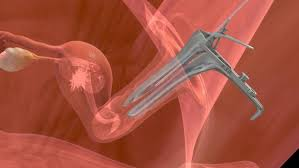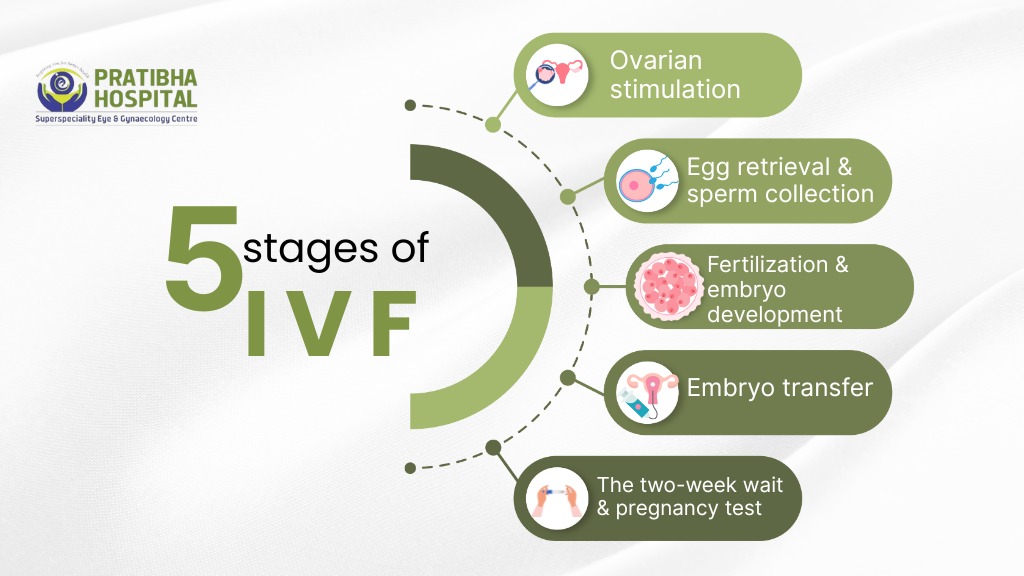What Are the 5 Stages of IVF? A Step-by-Step Overview
If you’re considering IVF to start or grow your family, it’s natural to feel a mix of hope, excitement, and uncertainty. One of the best ways to ease that uncertainty is by understanding the journey ahead — especially the five key stages of IVF.
In this step-by-step overview, we’ll walk you through each phase of the IVF process in simple, clear terms — from preparation to the final pregnancy test. Whether you’re just starting to explore fertility treatment or preparing for your first cycle, this guide is here to help you feel more informed, confident, and supported.
So, what are the 5 stages of IVF? No complicated terms—just a real, honest explanation of what to expect.
Stage 1: Ovarian Stimulation—Preparing The Body
The first stage of IVF begins with stimulating the ovaries. In a natural cycle, a woman usually produces one egg per month. However, for IVF to be effective, doctors aim to collect multiple mature eggs. To make this happen, you’ll be given hormonal medications, usually through daily injections for around 8 to 14 days.

These medications encourage your ovaries to produce several eggs at once. During this time, you’ll be closely monitored through ultrasounds and blood tests to track your hormone levels and the growth of your follicles (fluid-filled sacs that contain the eggs).
The key here is timing. When your follicles have grown enough, your doctor will plan the egg collection at just the right moment to give you the best chance. It’s important to note that every woman’s response is different, and adjustments in medication may be made along the way.
Stage 2: Egg Retrieval And Sperm Collection
Once your follicles are ready, you’ll be given a final injection—often called the “trigger shot”—to help your eggs fully mature before retrieval. About 34 to 36 hours later, the egg retrieval procedure takes place.
This is a minor surgical procedure done under sedation or anesthesia. Using ultrasound guidance, your doctor will insert a thin needle through the vaginal wall to collect the eggs from your ovaries. The process itself is fairly quick—usually around 20 to 30 minutes—and in most cases, you’ll be able to head home the very same day.
To move forward, a sperm sample is also provided at this time, whether it’s from your partner or a donor. The collected sperm is then washed and prepared in the lab to ensure only the healthiest ones are used for fertilization.
Stage 3: Fertilization And Embryo Development
Now that both are ready, the eggs and sperm are combined in the lab to begin fertilization. There are two main methods used:
- Conventional IVF:
In the lab, the sperm is placed with the eggs in a controlled environment to allow natural fertilization to occur.
- ICSI (Intracytoplasmic Sperm Injection):
For couples facing male fertility issues, fertilization can be supported by directly injecting a single sperm into the egg.
After fertilization, the lab monitors the embryos over the next few days. Usually by day 3 or day 5, the embryos are evaluated for quality and development. When the embryo is of good quality, it stands a much better chance of embedding itself in the uterus.
This stage is where science and nature come together, and it’s truly fascinating to see what modern fertility labs can do to support this process.
Stage 4: Embryo Transfer
One of the most important stages of the IVF process is embryo transfer. Depending on your situation and the number of good-quality embryos, your doctor may recommend transferring one or more embryos.

Most women find this procedure brief and comfortable, comparable to a usual gynecological exam. With the help of a fine catheter, the embryo is placed directly where it needs to be—in your uterus. You don’t need anesthesia for this step, and you can typically return to your normal routine afterward, although most doctors advise taking it easy for a day or two.
At this point, your body does the rest of the work. If the embryo implants successfully, pregnancy begins.
Stage 5: The Waiting Period And Pregnancy Test
The final stage is often the most emotionally challenging: the two-week wait. After the embryo transfer, there’s usually a wait of about 10 to 14 days before you can find out if it worked with a pregnancy test. During this time, it’s natural to feel anxious and hopeful all at once.
You might be tempted to take a home pregnancy test early, but it’s best to wait for your scheduled blood test at the clinic. This test measures the hormone hCG (human chorionic gonadotropin) to confirm pregnancy.
Regardless of the outcome, this stage brings closure to the IVF cycle. If the test is positive, congratulations! If not, your doctor will discuss the next steps and whether another cycle might be appropriate.
What Are The 5 Stages Of IVF? A Quick Recap
To summarize:
- Ovarian Stimulation: Hormonal injections to produce multiple eggs.
- Egg Retrieval and Sperm Collection: Minor surgery to collect eggs; sperm is also prepared.
- Fertilization and Embryo Development: Eggs and sperm are combined in the lab.
- Embryo Transfer: In this step, strong embryos are transferred into the uterus to begin their journey.
- The Waiting Period and Pregnancy Test: A blood test confirms pregnancy after about two weeks.
Each of these stages is important and builds on the previous one. Understanding the process can make the journey feel more manageable.
Emotional Support Matters
IVF is more than a medical procedure. It’s a deeply emotional experience that requires strength, patience, and support. Having a caring team around you makes all the difference. Talk to your doctor, ask questions, and lean on your loved ones. Many couples also find comfort in joining support groups where they can share experiences and get advice.
It’s natural to feel a blend of emotions, whether it’s hope, worry, excitement, or something else entirely. Being informed helps ease some of the stress and gives you a sense of control over your journey.
Also read: Importance of Mental Wellness in Women’s Reproductive Health
Conclusion
So, what are the 5 stages of IVF really about? They’re about giving nature a helping hand with science. They’re about creating a path where once there was uncertainty. Most of all, they’re about hope.
If you’re considering IVF, know that you’re not alone. Many have walked this road before you and found joy at the end of it. With the right information, the right team, and a little patience, you too can take confident steps toward building the family you’ve always dreamed of.
Whether you’re just starting to explore your options or already preparing for treatment, understanding each stage helps you feel ready for what’s next. You’re doing what’s right for you, and that’s what matters Because every path to parenthood is special in its own way.







